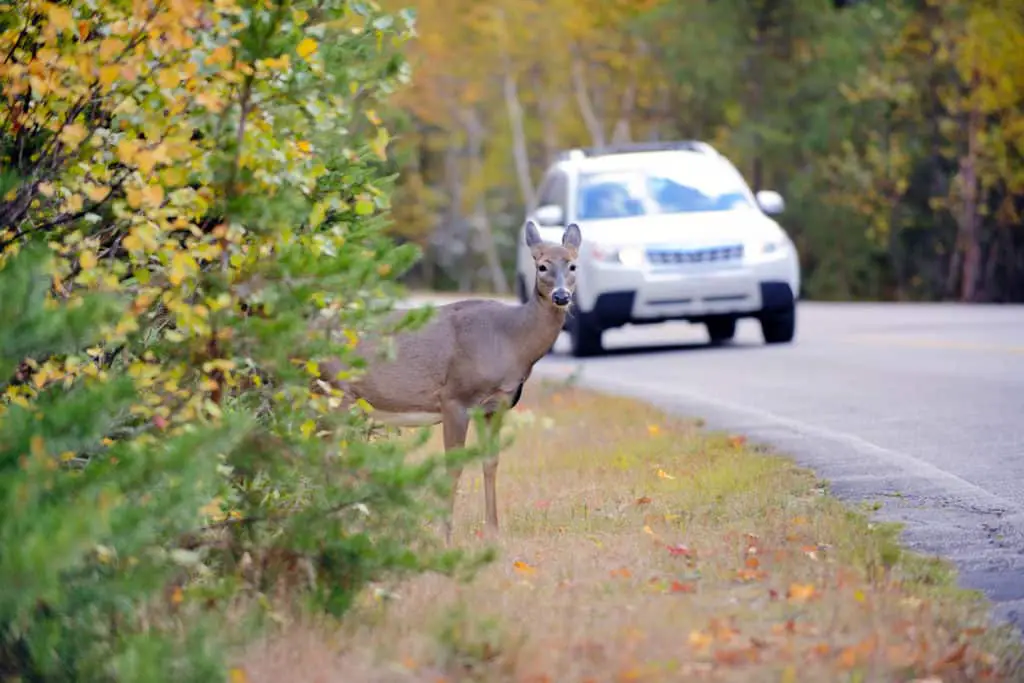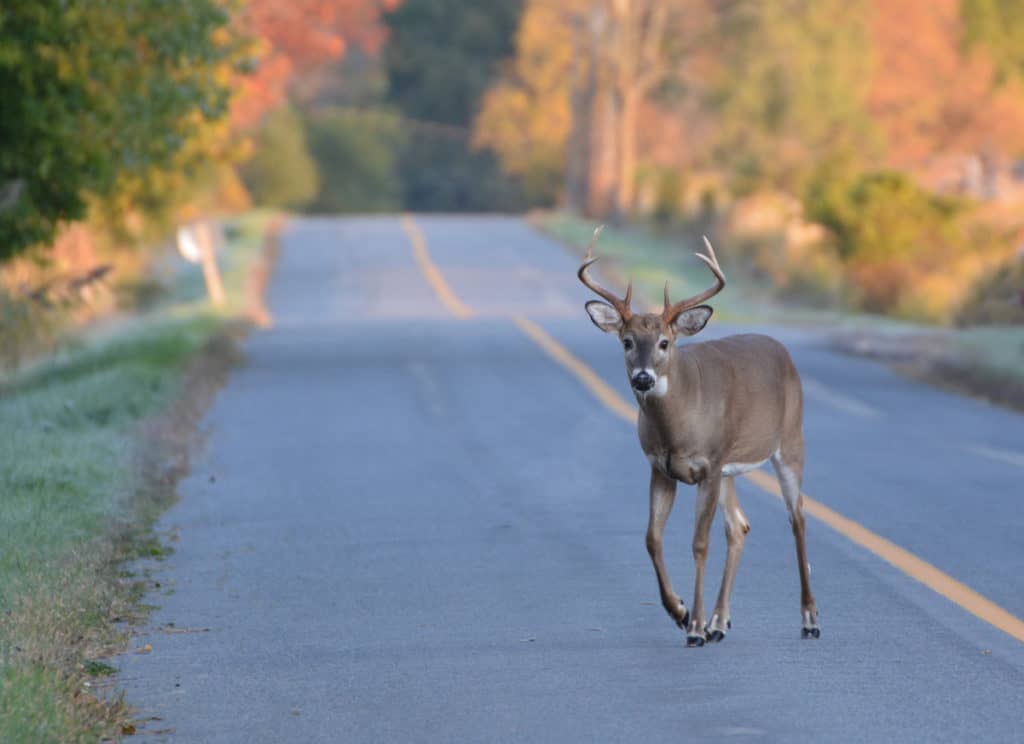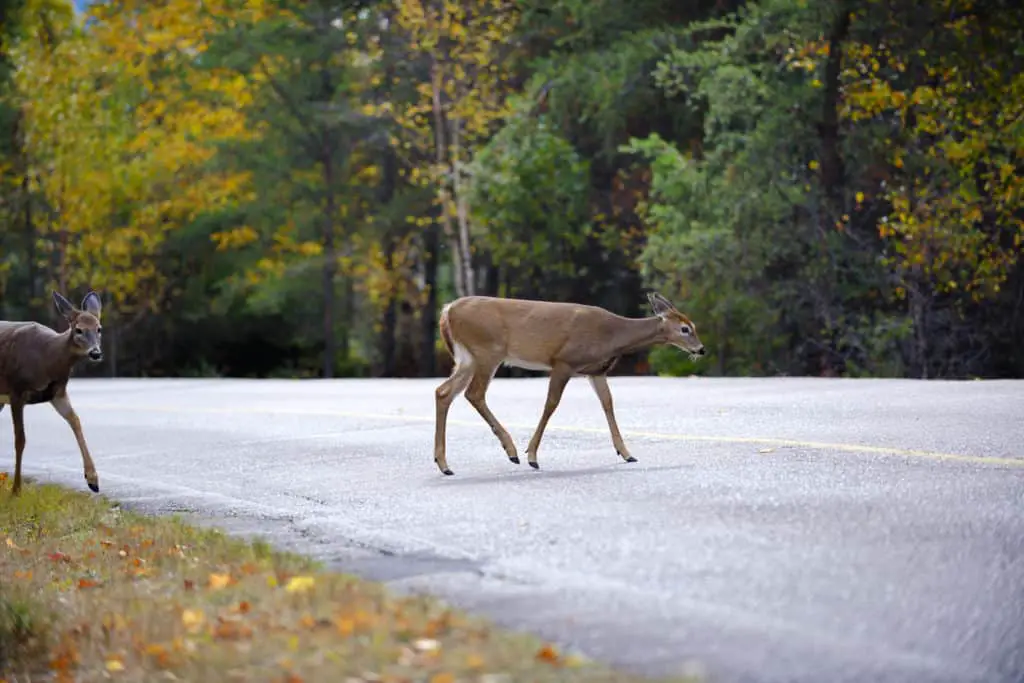If deer whistles for cars worked, they would save 140 human lives yearly, 65,000 deer-vehicle collisions would be avoided annually just in New York state, and nearly one billion dollars worth of damage would be avoided.
Given the human costs of deer and vehicle accidents, their high frequency, and staggering financial costs, if deer whistles actually worked, do you think you would need to spend $7 to tape one on your car?
The truth is, if deer whistle for cars worked, they would be standard, required safety equipment on every vehicle.

Deer whistles for cars do not work.
Deer whistles for cars do not work for a variety of reasons:
- They are not loud enough to give deer any time to react.
- Generate a sound that is not heard at all by deer.
- Do not alter the deer’s behavior to avoid a collision.
- Deer living near roads become habituated to the whistles.
Deer whistles are not loud enough to be heard in time.
Deer need at least two seconds to detect the sound of a deer whistle, determine a response to it, alter their course, and avoid a collision with a vehicle traveling at 55 m.p.h. A deer whistle must emit a sound heard by deer at least 55 yards ahead of that vehicle to be effective.
According to recent research, deer whistles for cars do not generate the frequency ranges the manufacturers advertised. Researchers found the actual ranges to be ”3.3 kHz for closed-end whistles and 12 kHz for open-end whistles as opposed to ultrasonic or near-ultrasonic frequencies of 16 – 20 kHz as stated.”
A 12 kHz signal is not considered helpful for alerting deer. The 3.3 kHz signal is and is something the human ear can hear. But in testing, the researchers noted, ”In all tests of the whistles mounted on automobiles, the sound pressure levels of the devices were inaudible to the testers.” The reason? The sound the deer whistles made was drowned out by road noise.

Deer whistles on cars do not alter deer behavior.
There are five ways a deer near the side of the road can react to the approach of a strange sound, do nothing, turn its head and point its ears at the sound, move toward the sound, move away from the sound, or flee. Of these five reactions, only two (move away and flee) would benefit a motor vehicle operator and possibly prevent a collision with a deer.
In testing both captive deer and those free-ranging along roadways, researchers noted, ”Given the general lack of response by deer to the sound treatments in our study, deer confronted with a vehicle and additional stimuli from auditory deterrents may:
- Have too little time to react as desired.
- Lack the neurological ability to process the alarm information efficiently to respond as desired.
- May not recognize the sounds we tested as threatening.”
Related: Do deer scents really work?
Deer habituate to the sound of deer whistles on cars.
Like humans with tinnitus, deer eventually habituate to unusual sounds.
Habituation for deer to a deer whistle on a car or truck would follow the same course. Deer whistles will elicit the same stages of response in deer, given enough time.
Stage One: Constant awareness and fear.
Stage Two: Brief moments of relief when busy.
Stage Three: Noise is a nuisance but not a threat.
Stage Four: No emotional reaction and return to everyday life.
Deer living next to a road get used to vehicle traffic. Cars equipped with deer whistles, typically not producing any different a sound in volume or tone (see above), are a part of that traffic. Soon enough, deer know when a car is coming, deer whistle or not. Over time, they become used to both types of vehicles and do not perceive them as a threat.
Even if a deer hears a car whistle for the first time, what danger does it preclude? Predators that regularly prey on fawn and deer do not pre-announce their attack with audible sounds. Predators, like wolves or coyotes, kill deer by silently approaching and using the element of surprise.
And a mere deer whistle cannot hope to dissuade a buck chasing an available doe during the rut.

Deer whistles for cars do not work, here’s what does.
Don’t fall for the proven scam of buying and trusting in a deer whistle for cars. Instead, take the following steps to help you avoid a collision.
- Be alert for, and modify your speed during, peak deer movement times.
- Use your high beams at night, whenever possible.
- Keep an eye out for deer moving on the shoulder of the road.
- If a deer is on the road, do not swerve to avoid it. Hit your brakes and hit the deer. A deer may severely damage your car, but a tree will kill you.
- Always wear your seatbelt.

